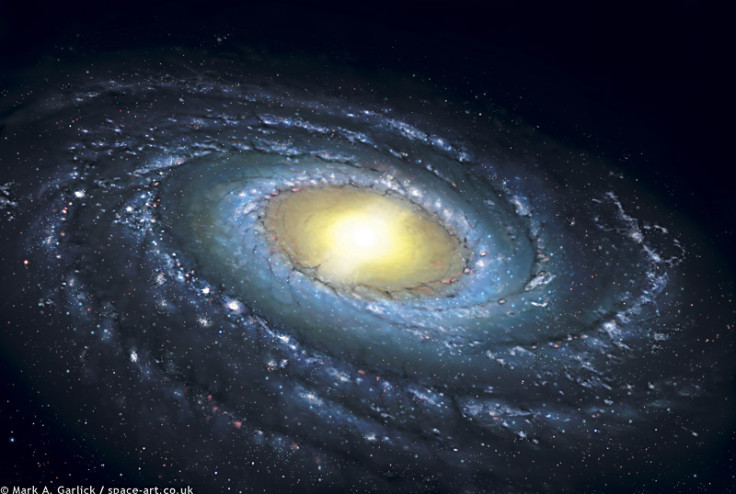Space: Could Dark Matter Be Turning Milky Way's Pulsars Into Black Holes?

A shortage of pulsars in the centre of the Milky Way could be because dark matter has turned them into black holes which are smaller than the super massive black hole at the centre of our galaxy.
Popular belief is that dark matter is composed of particles called weakly interacting massive particles (WIMPs) made of both matter and antimatter in one. When matter and antimatter meet they annihilate one another.
But another theory of asymmetric dark matter believes that dark matter comes in pure matter or antimatter versions. When two such particles meet, they would not destroy one another but keep building up in quantity.
Such an asymmetric dark matter in a star would build over time to become unable to support itself through fusion and collapse into a black hole, says the new study published in Physical Review Letters.
Pulsars situated in the core would be ideal, reports Scientific American.
Pulsars elsewhere in the galaxy would not be similarly affected because dark matter is densest at the core of galaxies, say the authors. Even at the core it takes very long for dark matter to build up, given its low interactivity.
In normal stars, the regular particles at the cores are not dense enough to catch many dark matter ones. But in super-dense pulsars they might accumulate enough to do damage.
The authors of the study, Joseph Bramante of the University of Notre Dame and Tim Linden of the Kavli Institute for Cosmological Physics at the University of Chicago, agree that it is too early to jump to a dark matter conclusion, but their model could provide an answer for the observed paucity.
Verification of the theory by actually detecting a pulsar turning black hole would be a binder but chances are low. Once it has turned into a black hole it will become doubly invisible being a black hole made of dark matter.
The team does not rule out the fact that a paucity of pulsars in the galaxy core could possibly be due to some hitherto unknown astrophysical reason. Or simply that the missing pulsars have not been detected.
Pulsars are believed to be rapidly rotating neutron stars that emit regular pulses of radio waves and other electromagnetic radiation at rates of up to one thousand pulses per second. Just like the black hole, a pulsar too is the end point of stellar evolution.
Dark matter is believed to make up almost 85% of matter in the universe. Due to their nature of weak interactions with matter, they can only be detected indirectly from the gravity they exert or the products of their interactions.
© Copyright IBTimes 2025. All rights reserved.





















